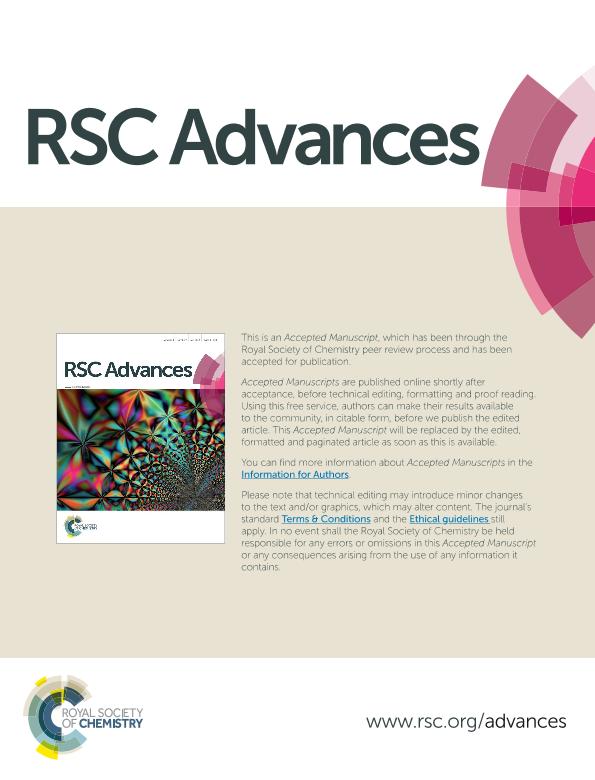Artículo
Morphological evolution of noble metal nanoparticles in chloroform: Mechanism of switching on/off by protic species
Douglas Gallardo, Oscar Alejandro ; Gomez, C. G.; Macchione, Micaela Alejandra
; Gomez, C. G.; Macchione, Micaela Alejandra ; Cometto, Fernando Pablo
; Cometto, Fernando Pablo ; Coronado, Eduardo A.
; Coronado, Eduardo A. ; Perez, Manuel Alejo
; Perez, Manuel Alejo
 ; Gomez, C. G.; Macchione, Micaela Alejandra
; Gomez, C. G.; Macchione, Micaela Alejandra ; Cometto, Fernando Pablo
; Cometto, Fernando Pablo ; Coronado, Eduardo A.
; Coronado, Eduardo A. ; Perez, Manuel Alejo
; Perez, Manuel Alejo
Fecha de publicación:
13/11/2015
Editorial:
Royal Society of Chemistry
Revista:
RSC Advances
e-ISSN:
2046-2069
Idioma:
Inglés
Tipo de recurso:
Artículo publicado
Clasificación temática:
Resumen
The morphological stability/morphological reshaping of noble metal nanoparticles are studied experimentally in order to unravel the chemical mechanisms lying beneath. Gold and silver nanoparticles (AuNPs and AgNPs, respectively) formed in a chloroformic environment are used, as model synthetic systems, to study the phenomena of morphological change. The morphological evolution of NPs that follows their formation, is characterized by spectroscopy (UV-visible, Raman and FTIR) and TEM (Transmission Electron Microscopy). The change of NP morphology involves the increase of the average NP size and the broadening of size distribution, in a close resemblance with the effect characteristically obtained from the Ostwald ripening. The effect of the poor solvating properties of chloroform in stabilizing small charged species (H+, Ag+, Au+) as well as the principle of electroneutrality of matter are analyzed in order to formulate a feasible reaction scheme consisting of a three-step process: the generation of soluble intermediary species by corrosion of nanoparticles, the diffusion of intermediary species from one nanoparticle to another, and the re-deposition process involving the reduction of intermediary species. This basic reaction scheme is used as a hypothesis to plan and perform experiments, which reveal that molecular oxygen dissolved in the dispersive medium can drive NP corrosion, however, protic species are also required as co-reactants. The polarity of the hydrogen bond and the ligand properties of the anions produced by de-protonation are features of the protic species that enable/disable corrosion and, in turn, the NP morphological evolution.
Palabras clave:
Nanoparticles
,
Ostwald Ripening
,
Mechanisms
Archivos asociados
Licencia
Identificadores
Colecciones
Articulos(INFIQC)
Articulos de INST.DE INVESTIGACIONES EN FISICO- QUIMICA DE CORDOBA
Articulos de INST.DE INVESTIGACIONES EN FISICO- QUIMICA DE CORDOBA
Citación
Douglas Gallardo, Oscar Alejandro; Gomez, C. G.; Macchione, Micaela Alejandra; Cometto, Fernando Pablo; Coronado, Eduardo A.; et al.; Morphological evolution of noble metal nanoparticles in chloroform: Mechanism of switching on/off by protic species; Royal Society of Chemistry; RSC Advances; 5; 122; 13-11-2015; 100488-100497
Compartir
Altmétricas



